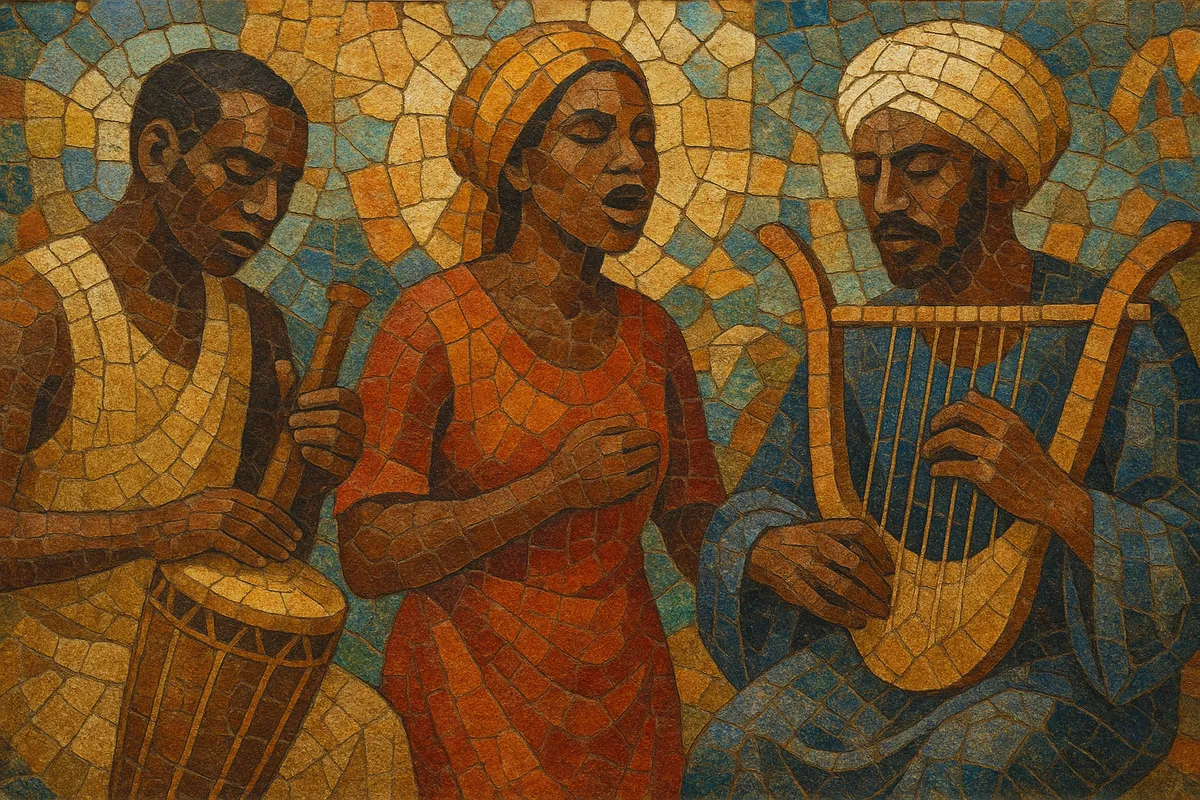Northeastern African music is a broad regional umbrella encompassing the traditional and popular musics of the Horn of Africa and the Nile–Red Sea corridor—principally Ethiopia, Eritrea, Somalia, Djibouti, and Sudan (including Nubia). It is characterized by distinctive modal systems, asymmetric rhythms, and timbres shaped by both sub‑Saharan and Near Eastern/Arab musical cultures.
Core features include Ethiopian qenet modes (such as tezeta, bati, ambassel, and anchihoye), pentatonic and heptatonic scales, melismatic singing, and call‑and‑response textures. Instrumentation often blends ancient lutes and lyres (krar, begena, tanbūra), spike fiddles (masenqo), frame and kettledrums (kebero, dalūka), handclaps, and ululation with the oud (kaban), nay/ney, and, in modern styles, electric guitars, keyboards, and horn sections.
The result is a palette that can be both trance‑like and dance‑driving: ceremonial chants and zikr coexist with urban dance bands and ethio‑jazz, while language and poetry (Amharic, Tigrinya, Somali, Arabic, Oromo, Afar, Beja, and more) anchor the music to place and community.
The region’s musical foundations predate written history, shaped by Nile Valley civilizations and the liturgical traditions of Coptic and Ethiopian Orthodox Christianity alongside Islamic devotional practices. Harp‑ and lyre‑based court and sacred repertories, communal work and wedding songs, and trance rites formed a deep reservoir of styles, instruments, and poetic forms.
Trade and migration across the Red Sea connected the Horn of Africa with the Arabian Peninsula, bringing oud, maqam aesthetics, and devotional chant modalities into dialogue with indigenous pentatonic systems, polyrhythmic handclaps, and dance traditions. Distinct lineages crystallized: Ethiopian qenet modes and ecclesiastical chant; Tigrinya song forms; Nubian rhythms and songs along the Nile; Somali kaban (oud) song traditions with rich poetic meters; and Afar/Beja coastal repertoires.
With urbanization and radio in the early 1900s, city ensembles and theater troupes emerged, and shellac/gramophone recordings documented new urban idioms (e.g., Sudanese song schools). From the 1950s–70s, Addis Ababa’s “golden era” fused traditional modes with brass bands and jazz harmony, producing ethio‑jazz and iconic dance‑band recordings. In Mogadishu and Hargeisa, national theater orchestras (e.g., Waaberi) pioneered sophisticated kaban‑led songcraft; in Khartoum, amplified Nubian and Sudanese popular styles flourished.
Political upheavals from the late 1970s onward curtailed many state‑supported ensembles, pushing musicians into diaspora where the regional sound continued to evolve. Reissue projects (notably the Éthiopiques series) in the 1990s–2000s sparked a global revival, inspiring collaborations with jazz, funk, and electronic artists. Today, Northeastern African music thrives locally and abroad, spanning sacred chant and folk traditions to pop, hip hop inflections, and resurgent big‑band and ethio‑jazz scenes.


